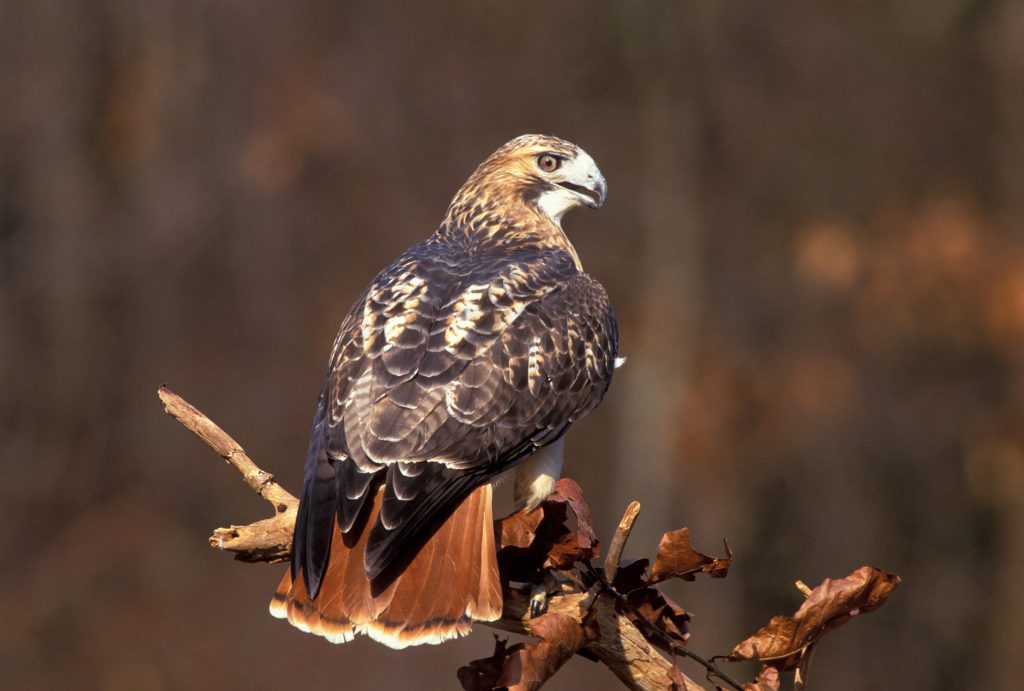Red-tailed hawks tend to keep the same territory their whole life; it can be as large as 9.6 square miles (25 square kilometers). The birds defend their area with aerial displays of steep dives and climbs, the mated pair gliding together.
About 95 percent of the red-tailed hawk’s diet consists of rodents, especially ground squirrels and mice. They also dine on other birds, reptiles, and even insects and fish at the water’s edge.
Despite its strength and soaring ability, red-tails perch in wait for prey rather than hovering in the air. They most often fly powerfully from a perch and then glide and snatch their meal from the ground. To stay alive, the hawk has to find the prey, catch it, and defend it from other raptors—golden eagles, bald eagles, and ferruginous hawks—long enough to eat it. Half of all red-tails do not make it through their first year of life.

Like other birds of prey, red-tails are vocal during the breeding season but are usually silent the rest of the year. Adults have a screeching, raspy voice used during courtship; chicks make higher-pitched, shrill calls to help the parents locate them.
Body language is an important communications tool, too. An aggressive red-tailed hawk holds its body and head upright, and its feathers stand up. A submissive hawk holds its head lower to the ground and flattens its feathers.
Red-tails pair up for life, and their aerial courtship is much like their territorial displays, a daring air show of flight bravado as the birds lock talons and spiral downward.
The more migratory red-tailed hawks of the north have dramatic displays, while the more sedentary birds of the south don’t seem to work as hard to impress their mates. Although red-tailed hawks mate for life, it doesn’t mean a surviving partner won’t go on to mate again, even returning the next season to the breeding territory it knows best.














